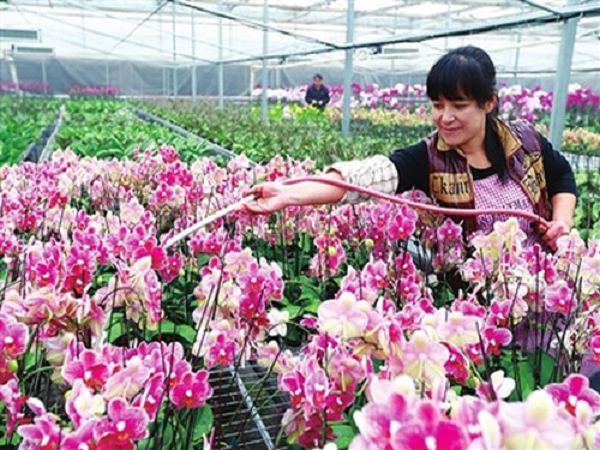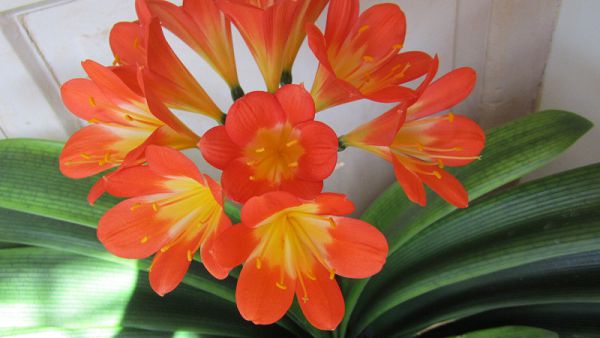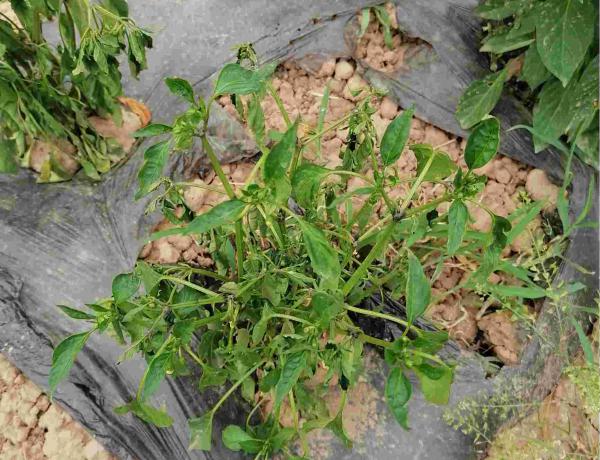Fertilization technique of potted Phalaenopsis

Phalaenopsis mainly depends on extra-root topdressing to promote plant growth, so during its growing season, nitrogen, phosphorus and potassium fertilizer or potassium dihydrogen phosphate with a concentration of 0.1%-0.3% are sprayed once a week, as well as stone-sulfur mixture, carbendazim, methyl thiophanate and other pesticides to prevent and treat diseases. Phalaenopsis can be cultivated with soilless substrate or planted in soil in greenhouse. The soilless substrate can use moss, peat, bark and so on. Several companies in Yunnan use moss as substrate potted plant, using nutrient solution, water and fertilizer, and the effect is better.
Phalaenopsis fertilization is basically combined with watering, generally dissolve a large number of elements and trace elements in water in proportion, adjust the pH to slightly acidic, and then spray the whole plant, once a week, the concentration is 0.1%. 0.2%, it is best to use chemical fertilizer that can be absorbed directly by the plant.
Domestic Phalaenopsis must master the correct fertilization methods in order to achieve vigorous roots, leaf fertilizer, flowers and avoid the occurrence of fertilizer damage.
1. Fertilizer is thinner than thicker. The fertilization principle of Phalaenopsis is to apply thin fertilizer frequently, a small amount for many times. Thick fertilizer can easily lead to rotten roots, when using water-soluble quick-acting fertilizer, special attention should be paid to the dilution concentration according to the multiple specified in the instruction manual. Do not increase the concentration without authorization. It is safer for beginners to dilute more than twice.
2. During the growing period, the times of fertilization are once a week or once every 10 days. The concentration of fertilizer should be increased gradually from small seedlings to big seedlings. In addition, root fertilizer (fertilizer applied to the rhizosphere substrate) and leaf fertilizer (extra-root topdressing applied to the leaf surface) should be applied alternately.
3. The types and methods of fertilization are different in different growth stages. When the new buds are just growing, there is a high demand for nitrogen fertilizer, but it still needs to be combined with potash fertilizer. Phosphate fertilizer should be applied during flower bud formation to promote flower bud development.
4. Fertilization should be appropriate at bud stage or flowering stage. Fertilization should not be too much, too frequently, especially not more nitrogen fertilizer, otherwise it will cause plant excess nutrients and stimulate vegetative growth, thus shortening or counteracting the ongoing reproductive growth, resulting in bud early fall (bud elimination), or flower bud withering.
5. Fertilization is most easily absorbed by Phalaenopsis when the temperature is 22-28 ℃. Therefore, it is better to apply fertilizer in the morning in spring and autumn, in the evening in summer, and less or avoid fertilization in winter when the temperature is low or when there is a cold spell. When cold or hot, the temperature is too low or too high will cause Phalaenopsis dormancy or semi-dormancy phenomenon, it is not suitable to apply fertilizer at this time. Because when the plant is dormant or semi-dormant, the amount of activity in the body will be greatly reduced, coupled with stomatal closure, water evaporation is almost zero, and there is no ability to absorb fertilizer, fertilization is undoubtedly wasted at this time, and fertilizer will accumulate in the planting material. make the substrate acidified prematurely, if not carefully handled, it will also cause root cap growth hindrance, or even rotten root.
6. Fertilization should be uniform and the method should be appropriate. When applying water-soluble quick-acting fertilizer, it should be drenched through the whole basin until fertilizer and water flow out from the bottom of the basin. The leaves should also be wet, because the leaves of Phalaenopsis can absorb fertilizer as well as the roots. When applying solid fertilizer, it should be spread evenly so that the root can be evenly absorbed; do not pile it in a pile on the rhizosphere, otherwise the air root will be burned because the amount of fertilizer in this position is too thick.
7. Orchids that have just been planted or just changed pots should not be fertilized for the time being. Because when planting or changing pots, the root system of the plant will be damaged and broken, at this time fertilization is easy to make Phalaenopsis root wound infected with bacteria, resulting in rotten roots.
8. When plant diseases and insect pests occur or plant growth is weak, it is best to suspend fertilization. Because the absorptive capacity of Phalaenopsis is weak at this time, fertilization is undoubtedly a waste, and it is also possible to aggravate the disease and make the weak plants weaker.
9. When the plant has rotten roots or the planting substrate is rotten, fertilization should be suspended. First, the orchid plant should be poured out, the rotten substrate should be removed, and then the rotten root should be cut off and replanted with a new cultivation substrate, and fertilization should be restored when the normal growth is restored and the new root grows.
Matters needing attention in fertilization:
The principle of fertilization should be less fertilization and light fertilizer. Because it grows faster and its growth period is longer.
Fertilizer month note: Phalaenopsis planted for one year or many years will change pots every year in late spring and early summer (May). Phalaenopsis which has just changed pots is in the recovery stage and there is no need to fertilize the orchid plants. After a month of recovery, the orchid plant began to grow normally. That is to say, from June to September, the orchid plant enters the growth period and needs to be fertilized once a week.
Suitable fertilizers for Phalaenopsis: foliar fertilizer, potassium dihydrogen phosphate, farm fertilizer fermented with water, special fertilizer for orchids, etc. During the growing period, Phalaenopsis can be fertilized alternately with foliar fertilizer and potassium dihydrogen phosphate. If there are no these two kinds of fertilizer, you can choose to add water to ferment farm manure to irrigate fertilizer water. If there is special fertilizer for orchids at home, the special fertilizer for orchids should be applied directly.
Matters needing attention for fertilization in spring and summer: the temperature in summer is high, so we should stop fertilizing orchid plants. In autumn, the growth rate of Phalaenopsis begins to cool down, and the number of fertilizers should be reduced. At this time, if frequent fertilization to the orchid plant will affect the formation of flower buds, it will be difficult to bloom.
Related
- Fuxing push coffee new agricultural production and marketing class: lack of small-scale processing plants
- Jujube rice field leisure farm deep ploughing Yilan for five years to create a space for organic food and play
- Nongyu Farm-A trial of organic papaya for brave women with advanced technology
- Four points for attention in the prevention and control of diseases and insect pests of edible fungi
- How to add nutrient solution to Edible Fungi
- Is there any good way to control edible fungus mites?
- Open Inoculation Technology of Edible Fungi
- Is there any clever way to use fertilizer for edible fungus in winter?
- What agents are used to kill the pathogens of edible fungi in the mushroom shed?
- Rapid drying of Edible Fungi



